TAGGED AS: movies, Mystery, thriller
With Trap opening this weekend, M. Night Shyamalan looks to build upon an impressive streak of trapping his movie characters in Pennsylvania-based locations, one that dates all the way back to his blockbuster 1999 film The Sixth Sense. Whether it’s trapping teenagers in zoo dungeons or aliens in farmhouse pantries, Shyamalan has an eerie penchant for locations or situations that are hard to escape. Even the projects that he’s produced or written, like Wayward Pines, Devil, Servant, and The Watchers, feature characters either literally or philosophically stuck in elevators, magic forests, or swanky brownstones.
In 2014, Shyamalan took out a loan on his 125-acre Pennsylvania estate and started self-funding his films to free himself of the trappings of the Hollywood system. His $5 million-budgeted found-footage thriller The Visit grossed $98.5 million worldwide, and since then he’s kept his budgets manageable by keeping his characters locked up in magic beaches, psychiatric facilities, and isolated cabins. The $769 worldwide box office haul of the five films he’s released since 2015 have allowed him to go a bit bigger with Trap as he ditches rural Pennsylvania farms for an arena jam-packed with screaming fans who don’t know an infamous serial killer is, you know, trapped among them while they sing along with their favorite pop star.
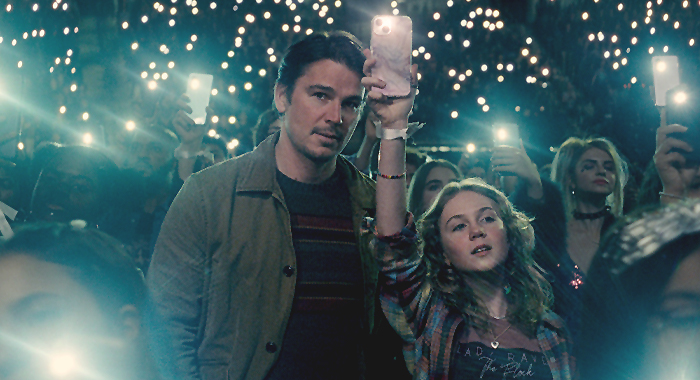
(Photo by ©Warner Bros. Pictures)
The title “Trap” got us thinking about other patterns in Shyamalan’s films, and whether or not they affect the overall Tomatometer score or worldwide box office. For instance, is it better for a film’s Tomatometer if characters are stuck in a single location for the majority of the movie? Do they fare better when they’re set in Philadelphia? What about if a cast member from Lucky Number Slevin is in it?
The trailer for Trap suggests that all three of those conditions have been met, so we’ll have to wait and see how well the thriller is received before we can say for sure.
In the meantime, we rewatched the 11 films that could best be described as “M. Night Shyamalan thrillers,” leaving out The Last Airbender, After Earth, and Wide Awake because they are outliers in his filmography and don’t feature Mark Wahlberg talking to a plant. During the rewatch, we took notes, looked for tears, and counted the twists to come up with seven data points that will almost certainly ensure the success of a M. Night Shyamalan thriller. Or not, if you don’t follow them.

(Photo by ©20th Century Fox)
With all of that in mind, sit back and focus all of your senses as we present six twisty Tomatometer facts to help craft the perfect M. Night Shyamalan movie. For reference, here are some numbers to know before we dive into the data:
Oh, and it case it isn’t glaringly obvious: SPOILERS FOR SEVERAL M. NIGHT SHYAMALAN MOVIES WILL FOLLOW.
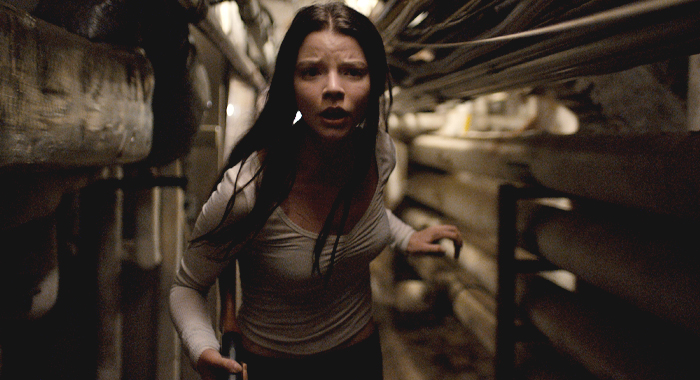
(Photo by ©Universal Pictures)
When it comes to our definition of “trapped,” we had to be fairly flexible. For instance, in Split. Casey Cooke (Anya Taylor-Joy) is locked up in Kevin Wendell Crumb’s (James McAvoy) secret lair for 85.4% of the film’s running time. In The Sixth Sense, the ghost of Malcolm Crowe (Bruce Willis) spends 84.1% of the 108 minutes trapped in the human realm before he can move on. Unbreakable’s David Dunn (Willis again) is trapped in a tangled web of sadness and it isn’t until the 98.5-minute mark when he’s able to free himself from it. OK, so maybe that one’s a bit of a stretch.
The beauty of a M. Night Shyamalan film is figuring out what the trap is. In The Village, the children of the Village Elders are trapped not only in an isolated community surrounded by monsters, but also trapped in their parents’ lies and sadness. The trap can be metaphorical or literal, but it has to play out during 80% of the running time.

(Photo by ©Buena Vista Pictures)
It’s worth noting that in The Sixth Sense, Shyamalan’s most lauded and financially successful film, there are multiple traps. Dr. Crowe is stuck in the human realm, and Cole Sear (Haley Joel Osment) is stuffed into a “dungeon” for several excruciating minutes. Likewise, in Trap, Cooper (Josh Hartnett) is trapped inside an arena while an unlucky victim remains imprisoned inside his house. Smart move, Shyamalan.
Quick Note: For The Visit, we didn’t start counting the trapped time until the big twist that happens late in the movie. Up until that point, the two kids probably could’ve made a run for it without the “grandparents” knowing about it.

(Photo by ©Buena Vista Pictures)
Shyamalan’s four highest-grossing thrillers — The Sixth Sense, Signs, Unbreakable, and Split — reveal their twists or revelations on average 92.8% into the film’s running time, and his six Fresh thrillers reveal their twists or revelations 88.7% into their running time. Later is better, and proof of this comes from his five Rotten thrillers, namely Old, The Village, Glass, Lady in the Water, and The Happening, which on average reveal everything at the 70.5% mark.
While most know that it’s the execution of the twist and not the time when it’s revealed that matters, we can’t help but notice an interesting trend with these late reveals. Shyamalan was asked about his twist endings in an interview promoting the Apple+ show Servant, and he said his goal has always been to make sure that “What you’re left with at the end of the movie should tell you what you saw.”
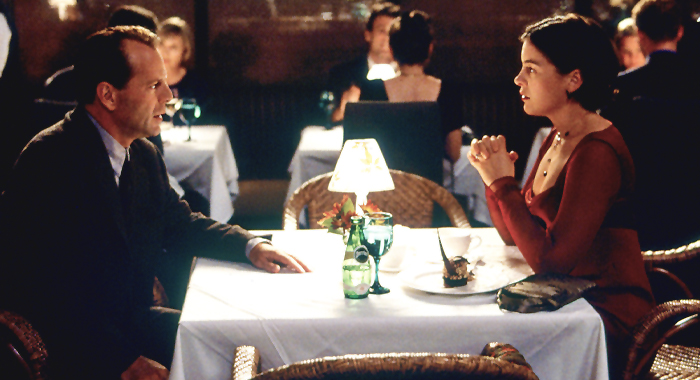
(Photo by Ron Phillips/©Buena Vista Pictures)
Part of the fun of watching The Sixth Sense or Unbreakable is how you’re forced to reframe the experience in your head after the big reveal. What’s great about the revelation in Signs is not the fact that the aliens are allergic to water, but that everything has meaning, and each choice led to Merrill (Joaquin Phoenix) defeating an alien intruder with a baseball bat and some H2O.
The problem with the reveals or twists in The Happening or Old (which are still both highly entertaining in their own ways) is that they don’t force you to reconsider what you just watched. In The Happening, it turns out that plant toxins are killing the populace, and in Old, it all comes down to a pharmaceutical company using a magic beach to run tests on people with medical conditions. They are more “A-ha!” than “Oh, wow, this changes everything!” twists. Also, It’s a shame that the “it takes place in modern times” twist in The Village annoyed so many people, because the film delivers an excellent message on generational trauma that was largely ignored because there were no ill-tempered monsters.
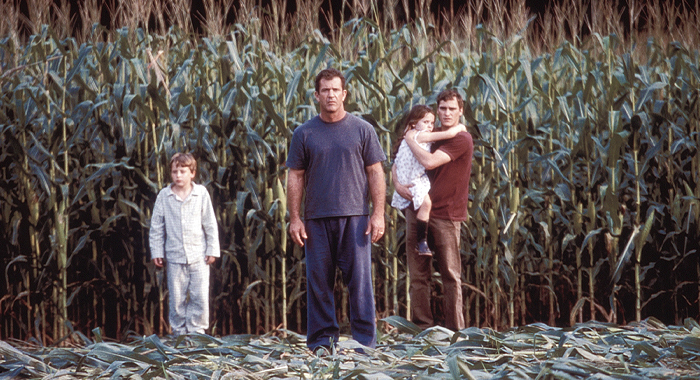
(Photo by Frank Masi/©Buena Vista Pictures)
The majority of the conversations around The Sixth Sense are largely focused on the beautiful twist ending and how it’s one of six horror films to be nominated for Best Picture at the Academy Awards. After watching the movie again, we’re convinced that not enough people are heaping praise on Toni Collette’s tear-soaked conversation that sees her character, Lynn, going through about 43 different emotions when she learns that her son Cole can see ghosts. Shyamalan wisely decided to keep the camera focused on Collette’s face as she single-handedly increased parental attendance at dance recitals for decades. (Incidentally, Collette would be robbed again years later when her stunning performance in Ari Aster’s Hereditary went largely unrecognized.)
Toss in the crying scenes featuring William Hurt (The Village), Mel Gibson (Signs), Gael Garcia Bernal (Old), Kathryn Hahn (The Visit), Jonathan Groff (Knock at the Cabin), or Robin Wright (Unbreakable), and you understand why crying parents are a good idea.
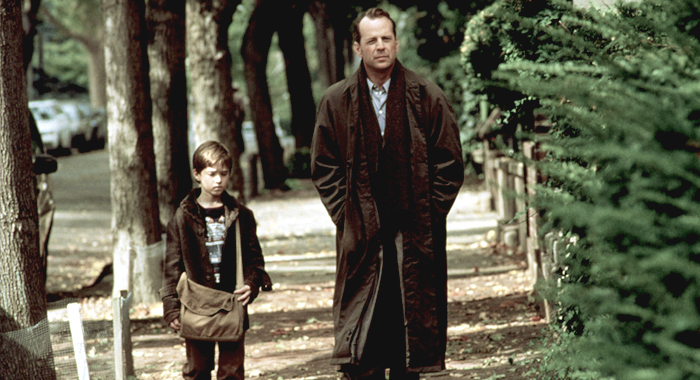
(Photo by ©Buena Vista Pictures)
The Sixth Sense, Unbreakable, The Lady in the Water, Split, and Glass all take place within the greater Philadelphia area, and their worldwide box office haul is a whopping $1.51 billion (you could buy many lifetimes’ worth of WaWa Iced Tea with the money). After some sleuth work, we found out that the S.W.A.T. members in the second trailer for Trap are wearing “Phila. Swat” on their vests, so it’s safe to assume that movie also largely takes place in Philadelphia (despite being filmed in Toronto for financial reasons). This is good news for Shyamalan’s bank account, because only Lady in the Water failed to clear nine digits, and the other four films all made more than $240 million at the worldwide box office. Philadelphia seems to be Shyamalan’s safety net, and after the not-so-great financial returns of Old and Knock at the Cabin, setting Trap in Philadelphia was a good idea.
Of course, Shyamalan has found success outside of Philadelphia, as Signs and The Village took place in rural Pennsylvania and made bank, but his highest-grossing movie is still The Sixth Sense, and it is a wholly Philly affair that collected $673 million worldwide. Trap won’t make that kind of money, but it could be the first Shyamalan movie since 2019’s Glass to clear $100 million.
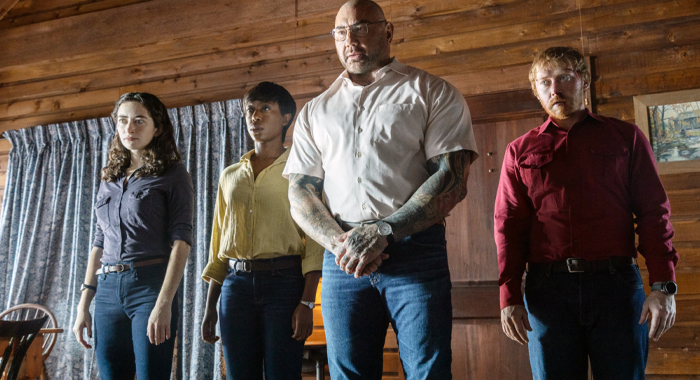
(Photo by Phobymo/©Universal Pictures)
Five of Shyamalan’s six highest-grossing films keep their chaos relatively contained, and the end of the world is never really considered. However, if a Shyamalan thriller doesn’t feature massive destruction, it’s worth noting that violence permeates almost every single frame of the film, and Trap looks to continue this trend. The elders of The Village moved to a secluded area because of violence, Dr. Malcolm Crowe is shot and killed in The Sixth Sense, and Charles (Rufus Sewell) dies quickly in Old because of the effects of a rusted knife. Toss in the Narfs who are attacked by scrunts in Lady in the Water and the slaughter of millions by plant toxins and pugnacious aliens in The Happening and Signs, and the world of M. Night Shyamalan is a frightening place.
Between Unbreakable, Split, Glass, The Visit, and Old (the pharmaceutical companies are old hats at killing people), Shyamalan has introduced the world to several memorable murderers like The Beast (James McAvoy), Mr. Glass (Samuel L. Jackson), and the Yahtzee-loving duo of Nana (Deanna Dunagan) and Pop Pop (Peter McRobbie). The most harrowing and cruel (in this writer’s opinion) scene in any Shyamalan film happens in Unbreakable when David Dunn battles the Orange Suit Man (Chance Kelly) inside a house of horrors. After realizing his superhero potential, Dunn follows the villain to a suburban house and witnesses him nonchalantly spitting beer onto the corpse of a dead woman — it’s horrible, and it’s easy to understand why Shyamalan wanted to add more humor and optimism to his follow up, Signs.
The darkly comedic The Visit and its psychopathic killers marked Shyamalan’s comeback, and since then, Split, Glass, Old, and Knock at the Cabin have all been predictably and unpredictably violent (the cannibalism in Split was a surprise). The good news for Trap is that the PG-13 rating will help the box office, and after the world-ending shenanigans of Knock at the Cabin and magic beach brutality of Old, it’s refreshing that Trap seemingly focuses on the exploits of a serial killer with a sense of humor.

(Photo by ©Universal Pictures)
It’s a coincidence, but Knock at the Cabin and Lady in the Water both have four-word titles, and they’re Shyamalan’s two lowest-grossing films. The Sixth Sense is his most famous movie and the title is longer than one word, so there are exceptions, but for him, movies with one-word titles are generally a safe and lucrative bet.
Between Old, Glass, Split, Signs, and Unbreakable, Old is the only film to make less than $240 million worldwide. However, it’s important to remember that it was released in 2021 when the world was starting to come out of the pandemic, and audiences probably weren’t too keen on watching a movie about people stuck somewhere, so the $90 million worldwide haul of Old is still kind of impressive. Four of Shyamalan’s six highest-grossing movies boast one-word titles, and Unbreakable, Signs, and Split make up three of Shyamalan’s four films whose Tomatometer scores sit at 70% or higher.
Based on the above data, it would take a major twist for Trap to fail with critics and audiences. But there’s one more thing Trap has going for it.
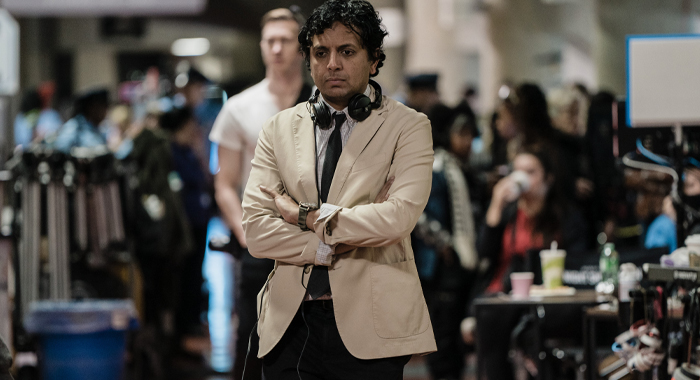
(Photo by Sabrina Lantos/©Warner Bros. Entertainment Inc.)
M. Night Shyamalan wrote and sold The Sixth Sense to Disney to get out of his contract with the Weinsteins. To win back fans after the beautifully dour Unbreakable, Shyamalan directed the crowd-pleasing Signs. After a string of misfires, he self-funded The Visit and reclaimed some of his former glory. In other words, never count M. Night out.
After the mildly profitable Old and Knock at the Cabin, Shyamalan seems to be back in PG-13 “fun mode” with Trap. It doesn’t check every box on our list, and we don’t yet know how things will shake out on the Tomatometer, but M. Night is nothing if not resilient. No matter what happens with Trap, it certainly won’t be the last we see of him, and who knows? Maybe next time he’ll fully embrace the numbers and make a high-concept thriller with a one-word title about a character in Philadelphia with crying parents who remains trapped for 80% of the film before a third-act revelation introduces an actor who appeared in Lucky Number Slevin. Sounds like a winner to us.
Trap
(2024)
opens in theaters on Friday, August 2, 2024
What do you love about M. Night Shyamalan films? Tell us in the comments.